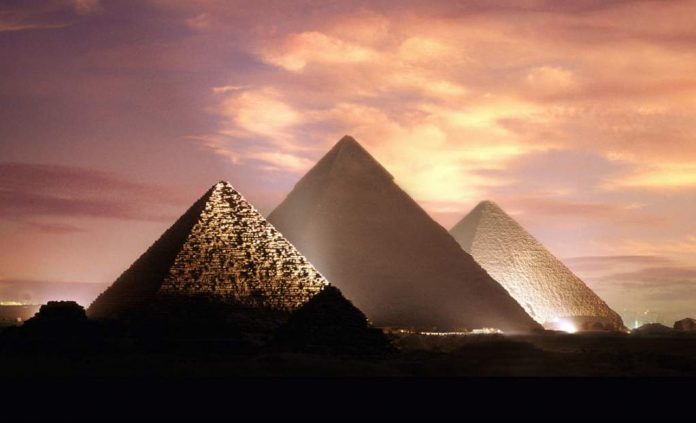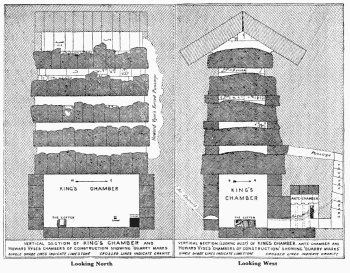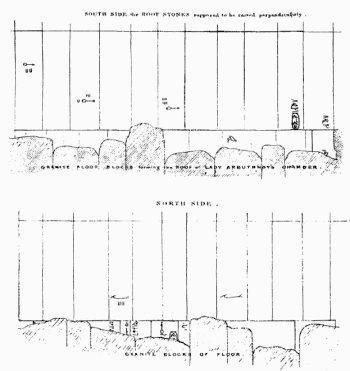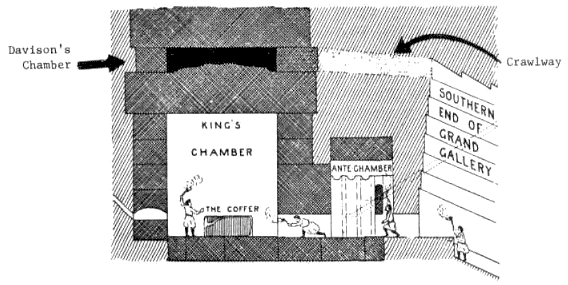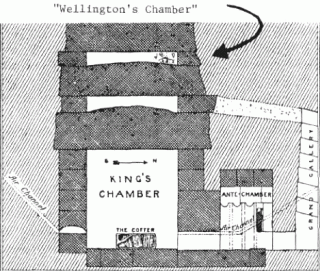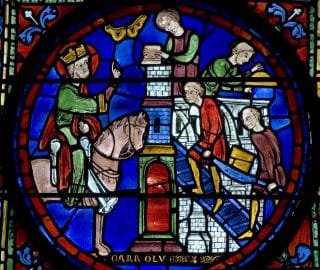Black Sun Rising 66, part 3
___
There is a shadow over this world, a pall of darkness and impending doom. It extends over land and sea, creeping through the hallowed corridors of power and extending into the rooms where little children play.
Every still sentient being feels the caress of its cold dead fingers, and every nation cowers before it. Internet pundits struggle with information overload in vain attempts to determine its point of origin, while the mainstream media paints smiley faces on the corpses of murdered dreams.
When “American Airlines Flight 11” punched its way into the upper floors of the World Trade Center’s north tower, people in the south tower were told by the public address system to remain in the building and go back to work, even as the north tower burned. Fourteen hundred people ignored the announcement and fled the building to safety. Six hundred stayed and went back to work. They all died horribly.
“The birthplace of human civilization… is being destroyed,” said Kino Gabriel, a Christian militia commander, during a telephone interview with the Guardian in late February, 2015 from Hassakeh in north-eastern Syria. He was commenting on the seemingly senseless vandalism by the rebels of civilization’s heirlooms in the Mosul Museum, the second largest museum in Iraq.
“In front of something like this, we are speechless,” said Gabriel. “Murder of people and destruction is not enough, so even our civilization and the culture of our people is being destroyed.”[1]
Tragically for the human race, this is nothing new. When a domesticated beast remembers where it came from, it goes feral, and at best is of no more use to its keeper. At worst, it becomes vermin to be hunted down and exterminated.
About twenty-five hundred years ago, the Greek entertainer Herodotus wrote that the Great Pyramid of Giza was naught but an over the top mausoleum built for and by Khufu, an Egyptian king in the Fourth Dynasty who reigned from 2609 BCE – 2554 BCE. Khufu is only known to legitimate historians by his three-inch tall statue found in Abydos and some passages in the Westcar Papyrus depicting him as good-natured ruler, amiable and interested in the nature of human existence and Magick.[2]
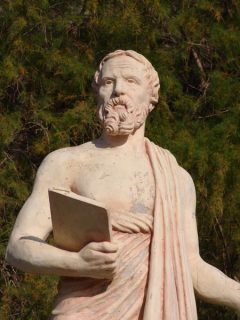
Herodotus, known since his own times as “The Father of Lies,” gives an account in “The Histories” of ants that are larger than foxes. These giant ants mine gold in the deserts of Northern India.
Wikipedia, who frequently uses Herodotus as an ancient source, tries to explain this away by presenting the theory that Herodotus had confused the Persian word for marmot with the one for mountain ant. The alibi is plausible because the Himalayan marmot does sometimes dig up gold during its incessant excavations, which in turn is harvested by some Indo-European tribes.
But Wikipedia’s excuses quickly fall apart as Herodotus continues his account — describing in great detail how the Indians must steal the ants’ gold only during the middle of the day, when the ants are dormant in the heat, specially mounted on the swiftest of camels. Because when the ants awaken they will pursue the Indians by scent, and if they should catch up, not one Indian would be left alive.[3]
Herodotus is known for using some of the most dubious of sources. He was a man who would frequently base his accounts of civilizations on what he was being paid to say about them.[4] Even Smithsonian and National Geographic (Nat-Geo), with their legions of Zombie archaeologists, don’t buy the story of Herodotus that Khufu used slaves to build the pyramid.
His little detail about the king of Egypt pimping out his own daughter when he ran short of funding for the Great Pyramid gives Herodotus’ entire account all the credibility of his tale of giant gold-mining ants.
_______________________________

It was 1837. Andrew Jackson was stepping down as president of the United States, and America would begin its long journey back to the status of colony. A tiny island nation now exercised almost unimpeded hegemony over the entire world. Rome had risen again as she had done in Constantinople then in Venice and now off the Atlantic coast of Europe like some eternal White whale breaching in a deathless sea.
It would take another generation or two, but eventually the “British Empire” would control all of North America and with it the prolific race of warriors she herself had sired.
Colonel Howard Vyse, born of British nobility, had been forged in the fires of the Napoleonic Wars. Finesse was not in his repertoire, nor perhaps fair play. As early as 1807 he had been formally accused of launching his parliamentary career through electoral fraud.[5]
The Pyramids of Giza and the Sphinx that acted as their silent sentinel had for untold millennia defied the entire world to solve the riddle of their existence. Now they were defying Vyse. So he did what any good son of the empire would do. He attacked them with complete abandon.
Vyse had arrived in Egypt seeking his place in history early in 1835 and quickly became enamored with the work of Giovanni Battista Caviglia. The Italian sea captain had been digging up the Giza plateau, in the service of empire, for twenty years already. Early on he had discovered the descending corridor in the great pyramid and in 1817 he was put to work clearing the sand that had been enveloping the Sphinx since the last days of the first Rome. Through the twenty year process of all this Caviglia had unearthed a wealth of artifacts and inscriptions: Greek, Roman and Egyptian.
Somewhere in the fall of 1836, Vyse enlisted the help of J. R. Hill, a well connected hustler working the booming Egyptian antiquities business. Hill managed to attain an edict from the Egyptian government for Vyse, called a Firman, to sole excavation rights on the Giza plateau. According to the Firman Vyse’s partners would be a “Mr. Sloane” in all likelihood a pseudonym for Hill and Patrick Campbell the British Consul General in Egypt. Caviglia was designated the work supervisor.
Vyse was disgusted with the fact that he would have partners and actually have to pay Caviglia. But he kept a stiff upper lip and carried on in the finest British tradition in the face of adversity. He took a long sightseeing tour of Upper Egypt. But upon returning to Giza on January 24, 1837, Vyse became furious.
Inside the great pyramid what, by 1837, had already been labeled the King’s Chamber is encased entirely in granite. From east to west it is 34.4 feet. From north to south it is 17.17 feet and it is 19.60 feet in height. The ceiling is comprised of nine huge granite slabs laid east to west. The slabs are smooth on the sides where they are fitted together and on the exposed bottoms that act as the ceiling for the King’s Chamber. They have been left rough on top where they act as a floor for a hollow compartment above the King’s Chamber named Davison’s Chamber; discovered by Nathaniel Davison in the eightieth century.
Spanning the length and the width of the King’s chamber below it, Davison’s Chamber is big enough to crawl through. The floor is extremely uneven due to the granite slabs being left rough on the side where they provide its floor. The ceiling in turn is provided by eight more granite slabs smooth on the same three sides as the nine below them. Caviglia had suspected that there was another hollow chamber on the other side of the eight slabs and that is where Vyse had expected him to concentrate his efforts. Vyse had even written in his journal,
“I am determined to carry on the excavations above the roof of (Davison’s) Chamber, where I expect to find a sepulchral apartment.”
Instead the crafty Italian had been digging up every mummy on the Giza plateau. Apparently he, Campbell and presumably Hill, had been cleaning up on the high prices they were fetching with the insatiable demand for them by European museums. Caviglia in gratitude to the scion of empire who had made him rich even named a particularly lucrative site Campbell’s Tomb.
A seething Vyse left the comforts of Cairo and moved on site in Giza to keep a better eye on the Italian. On February 11, they argued violently. On February 12, Caviglia, obviously still ignoring Vyse, struck pay dirt in Campbell’s Tomb. A sarcophagus inscribed with hieroglyphs and masons markings written in red ochre paint on the stone walls of the tomb were found.
That night Vyse held a clandestine meeting in Davison’s Chamber with an engineer from the Egyptian Public Works Department named John Perring, whom he had met through Hill. On February 13, Caviglia was banished from the site, and he would only return once on the fifteenth to pick up his belongings. Perring was given his job.
British aristocracy began arriving at the Giza plateau to gawk at the sarcophagus and masons markings in Campbell’s Tomb. Unable to show them anything new that he had discovered, Vyse entertained them by boring a sixteen foot hole into the shoulder of the Sphinx, attempting in a vain, to find its masons markings.[6] Apparently during the course of this vandalism he used explosives and giggled like a schoolgirl when he blew the back part of the sphinx’s head off.[7] By the middle of March, Vyse had decided that he would blow the pyramids up too.
They tunneled upwards through the soft limestone encasing the granite slabs at the eastern end of Davison’s Chamber. After forcing a small hole laterally towards the west, the expected hollow chamber was breached. Vyse records in his journal that he “inserted a candle at the end of a rod” and laments “I had the mortification of finding that it was a chamber of construction like that below it.”
The mad bomber of Giza then blew a man-sized hole through the eastern wall of what he immediately dubbed Wellington’s Chamber after the Duke of Wellington, who had defeated Napoleon for the empire in the decisive Battle of Waterloo. On March 30, Vyse and Hill entered Wellington’s Chamber becoming the first to do so in untold millennia.
They found it completely empty except for a mysterious black dust coating the floor. The floor itself was extremely uneven due to the eight granite slabs being left rough on the sides that comprised its floor. Its height ranges wildly from one foot four inches at the third slab from Vyse’s improvised entrance to four feet five inches at the fifth.
That very same night in Vyse’s own words,
“Mr. Perring and Mr. Mash having arrived, we went into Wellington’s Chamber and took various measurements, and in doing so we found the quarry marks.”
Mr. Mash, just like Perring, was a civil engineer. He was there because Vyse had requested him to be. There were four witnesses. It was a complete reversal of fortune and no doubt a jolly good stroke of luck for both Vyse and the empire. Even more so considering the quarry marks were on the western side of Wellington’s Chamber and Vyse hadn’t blown them to bits.
There are no quarry marks in Davison’s Chamber which is practically identical too and right below Wellington’s Chamber. No other quarry marks had ever been found in the pyramids of Giza. Outside of Vyse no more ever would be found until Zahi Hawass commandeered the entire Giza plateau on behalf of a pathologically corrupt Egyptian government in the last decade of the twentieth century.
Only the Vyse expedition ever found quarry marks and only after he inexplicably fired his foreman; another Italian named Paulo, on March 27 right after Paulo opened up the starter hole into Wellington’s Chamber. Vyse would fire his other foreman on April 4; yet another Italian named Giachino.
The nine granite slabs composing the ceiling of Wellington’s Chamber are smooth on the three discernible sides just as the eight comprising the ceiling of Davison’s Chamber. Vyse continued upwards forcing a passageway through the limestone on the east side of the granite. On April 25, he got above the slabs acting as a ceiling for Wellington’s Chamber and again blew open a hole laterally to the west and found another almost identical chamber. This one he named Nelson’s Chamber after Admiral Nelson, perhaps the empire’s greatest war hero.
The floor of Nelson’s Chamber was coated with the same black dust as the floor of Wellington’s Chamber. The fact that the dust wasn’t preserved to be analyzed by twenty-first century science may just be the most deplorable part of the whole sordid affair. Vyse, now on a role, writes “several quarry marks inscribed in red upon the blocks, particularly on the west side.”
Vyse’s journals make it clear that Hill was going in and out of each chamber, red paint and paint brush in hand,[8] ostensibly to inscribe the names of the empire’s war heroes as Vyse rattled them off. In his ponderous three volume felony; The Pyramids of Gizeh published in 1839 and 1842, a smug Perring quips “such is the state of preservation of the marks in the quarries, that it is difficult to distinguish the mark of yesterday from one of three thousand years.” It’s hard to believe that he wasn’t snickering when he wrote the paints “composition of red ochre called by the Arab’s moghrah is still in use.”
The explosions continued as the intrepid Vyse forged his way up through the limestone and into the history books. Continuing the forced passageway on the east side of the granite, he worked his way above the nine slabs comprising the roof of Nelson’s Chamber. On May 7, he turned his neolithic pyrotechnical display westward and blew out the eastern wall of yet another chamber. This one he named Lady Arbuthnot’s Chamber after the wife of Sir Robert Keith Arbuthnot, one of his well-placed mentors in the empire.
Although Lady Arbuthnot’s Chamber is practically wallpapered with “quarry marks”, Vyse fails to mention any marks in his journal entry for that day. Nevertheless, he says on May 18 that a Dr. Walni “applied for copies of the characters found in the great pyramid, in order to send them to Mr. Rosellini.” Italian. Ippolito Rosellini — after the death five years earlier of Frenchmen Jean-François Champollion, his close friend and colleague and the man who actually deciphered the Rosetta stone — was the preeminent authority on hieroglyphics in 1837. Dr. Walni was of course rebuffed.
The very next day, Vyse entered the chamber with Robert Keith Arbuthnot, a Mr. Raven and a Mr. Brethel. There they “compared Mr. Hill’s drawings with the quarry marks in the Great Pyramid; and we afterward signed an attestation to their accuracy.” Seems Hill was quite the artist. Not only was it his job to mar the archaeological site forever by painting the names of the empire’s war heroes on each newly discovered chamber, like some inner city gang banger spray painting gang signs on an abandoned subway car, but he had also been assigned by Vyse to copy the quarry marks to paper.
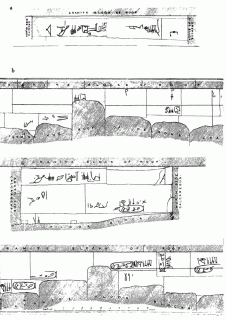
Why not? It was he who drew them on the chamber walls. The alleged quarry marks look like the stick people drawings of a seven year old child. The cartouches, many over two and half feet long and a foot wide, are oversized and violate every known sense of both proportion and aesthetics in hieroglyphics.
Most have been drawn either upside down or vertical, presumably to give them the appearance of authentic quarry marks. But why would anybody use a cartouche, which is how the Egyptians inscribed the names of their king, as a quarry mark that would never see the light of day after placement?
Did the builders need to know the name of their king? Would not simple numbers or arrows have sufficed?
What sentient being would actually believe these are authentic hieroglyphics?
By May 27, Vyse had completed the most destructive act of vandalism since the library of Alexandria was burned. More explosions, and he burst into the final chamber on its east side right above the eight granite slabs comprising the roof of Lady Arbuthnot’s Chamber. Those slabs are finished in the exact same way as all the others; smooth on three sides and left rough where they act as a floor for the new chamber.
The new chamber had a cantilevered limestone ceiling in order to relieve the weight of all the limestone on top of it. It was the end of the road for Vyse. There would be no more granite chambers above it. The final chamber was named after Patrick Campbell the man who had made Vyse’s crime against humanity possible. It was in Campbell’s Chamber that Vyse would produce Khufu’s cartouche and finally validate the yarn spun by Herodotus so many years ago.
The discrepancies in Vyse’s discoveries were legion. But nothing the academic weasel Samuel Birch, who validated them for the British Museum of London, could not ignore. As long as he pointed them out and did not appear as a complete imbecile for posterity. He began by remarking that the hieroglyphics were “not very legible, owing to their having been written in semi-hieratic or linear-hieroglyphic characters, they possess points of considerable interest.”
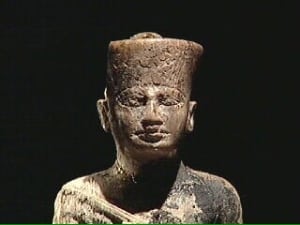
Those points of interest, aside from the fact that they incorporate “semi-hieratic or linear-hieroglyphic” writing styles that in some cases wouldn’t appear till hundreds of years after Khufu’s reign, also include “a curious sequence of symbols.” The symbols in question appear in the uppermost corner of Campbell’s Chamber where Khufu’s cartouche also appeared.
They are now said to represent a cardinal point of the compass through some mysterious linguistic permutation that no Egyptologist can clearly explain. The symbols are in fact, as noted by Birch, the hieroglyphic representation of “good gracious.” Good gracious indeed!
Birch also expresses bewilderment to the symbols following Khufu’s cartouche. He writes “The meaning of the hieroglyphics following the prenomen in the same linear hand as the cartouche is not very obvious…. The symbols following the name are very indistinct.”
Pointing out the presence of yet another ancient Egyptian form of writing, Birch notes that they are “written in characters very nearly hieratic.” He assumes the symbols are the title “Mighty in Upper and Lower Egypt.” He points out that they are similar to “a title that appears on the coffin of the queen of Amasis.” But he qualifies the assumption by saying the Saite dynasty, in which the queen of Amasis reigned, revived many of the old titles. He has to qualify that assumption. The Saite dynasty was two thousand years after the reign of Khufu.
Unable to anticipate the hordes of academic hacks the empire would raise up over the next hundred and fifty years to perpetuate its fraud, Birch seems to be apologizing when he writes “the presence of this name, as a quarry-mark, in the Great Pyramid, is an additional embarrassment.” Birch is of course referring to the now infamous ram cartouches of Khnem-khuf, a king who reigned after Khufu, which appeared in Wellington’s Chamber and Lady Arbuthnot’s Chamber.

Since Khufu’s cartouche appears in Campbell’s Chamber which had to have been built after Wellington’s and Arbuthnot’s chambers and there are written records that Khnem-khuf reigned after Khufu academics cannot even claim Khnem-khuf began the pyramid and Khufu finished it.
The Khnem-khuf cartouche features a ram or in the case of the ones found in Wellington’s and Arbuthnot’s chambers a stick people drawing of a ram. Khufu’s cartouche has no ram and appears exclusively in Campbell’s Chamber which was discovered only at the very end of Vyse’s ransacking of the pyramid.
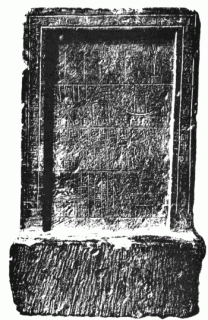
Earlier on in his firework display, Vyse had written “a cartouche, similar to that which first occurs in Wellington’s Chamber, had been published by Mr. Wilkinson Mater. Hieroglyph.” The book Vyse alludes too and which he no doubt used as a reference for his larceny; John Gardner Wilkinson’s Materia Hieroglyphica published in 1828, was rife with mistakes and incomprehensibly formatted. Wilkinson had erroneously attributed the Khnem-khuf cartouche to Khufu and Vyse had of course followed suit.
By 1837 Wilkinson an aristocratic son of empire just like Vyse had realized his mistake. He corrected it in his three-volume magnum opus Manners and Customs of the Ancient Egyptians published that year. Somewhere between May 7 and May 27 Vyse or one of his co-conspirators must have gotten hold of a copy. By May 27 the correct cartouche for Khufu had appeared in the final chamber.
Over a half century after Vyse poisoned the fledgling science one of the few Egyptologist worth mentioning, outside of E. A. Wallis Budge, Gaston Maspero would echo Birch’s sentiments in his definitive book on the entire subject, The Dawn of Civilization, published in 1894. “The existence of the two cartouches Khufui and Khnem-Khufui on the same monuments has caused much embarrassment to Egyptologists.”[9]
Vyse wasn’t done yet either. He would go on to “prove” Herodotus tale that the third pyramid was built by Mycerinus whom Herodotus claimed was the son of Khufu but archaeologists now know was his grandson. Vyse would do this by riddling the third pyramid with the obligatory explosions and finding a stone sarcophagus decorated in the style of the palace facade inside it.
In another room, a coffin coffer with the cartouche of Mycerinus along with a mummy was found. Vyse claimed he wasn’t present for these discoveries. But Mr. Raven coincidentally, yet again, was. It would be Mr. Raven, who refers to himself as Vyse’s most obedient servant; who would write the detailed affidavit of one more historical breakthrough by the empire’s Vyse squad.
The only problem is the mummy has recently been carbon dated to be from early Christian times. Two and a half millennia after the reign of Mycerinus and archaeologists, even from early on, unanimously concur that the coffin coffer is no older than a millennium and a half after Mycerinus. The “sarcophagus” was lost at sea when it was taken on a ship bound for England, no doubt scuttled, separately from Vyse’s improvised mummy and coffin coffer props.
Although the empire would promote Vyse to general for this one, the props themselves would end up being rejected by even Birch and Wilkinson. Birch expressed reservations about the coffin coffer and Wilkinson the mummy. None of this has prevented Egyptologists from referring to the third pyramid as the Pyramid of Menkaure, the Egyptian pronunciation of the Hellenized Mycerinus, to this very day. Vyse’s stick people cartouche of Khufu has in turn been used as validation for a Victorian pseudoscience more suitable to the dark ages than the twenty-first century.[10]
In 1850, a Frenchmen named Auguste Mariette would discover the Serapeum of Saqqara, where kings actually were interred, about ten miles south of Giza. In 1858 he would establish a new Egyptian Museum of Antiquities at Bulaq in Cairo after all the antiquities of the old one had been relocated to the Kunsthistorisches Museum in Vienna three years earlier. That same year the Khedive or Viceroy of Egypt would make him Egypt’s Director of Antiquities.
In 1878 he would hand pick his successor; fellow Frenchman Gaston Maspero, assuring Frances preeminence over England in Egyptian antiquities till the empire would break the back of the Ottoman’s once and for all in WWI.
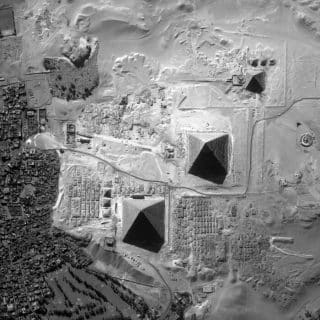
Egyptologists perform academic back flips attempting to convince the casual viewers of their TV shows and readers of their books that their “science” is based on archaeological evidence. But the truth is they systematically ignore both facts and artifacts that contradict their dogmatic conclusions, conclusions based on a fraud.
What is now called the Inventory Stele was discovered in 1858 by Mariette in a little temple, dated by Egyptologists to the twenty-first dynasty, situated on the east side of the Great Pyramid. Mariette was excavating the site on a commission from the Duke of Luynes to find evidence as to how the sphinx was built.
The stele clearly states that both the Great Pyramid and the Sphinx were already there when Khufu commenced his restoration of the temple for Isis; “Mistress of the pyramid.” In the stele the only things Khufu takes credit for actually building, for his own and his daughter’s interment, is two of the three small satellite pyramids flanking it.*[11]
Outside of Wallace Budge British Egyptologists predictably screamed almost in unison that it was fraud perpetrated by the priesthood of the twenty-first dynasty. They were led by Budges arch rival, loyal son of the Christian Brethren and rabid White supremacist; Sir William Matthew Flinders Petrie.
In Petrie’s view of the world the pyramids of Giza had to be built by an unknown “Dynastic Race,” a “fine” lighter-complexioned race that invaded Egypt from the south in late predynastic times conquering the “inferior” and “exhausted” indigenous dark skinned savages. The Aryan race of White supermen then slowly introduced dynastic civilization through interbreeding with the local “mulatto” race. This imaginary process of Darwinian eugenics culminated from the fourth dynasty on with the building of all the great edifices in Egypt.[12]
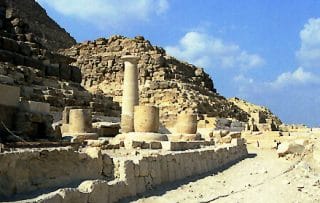
This baseless Eurocentric dribble was the prevailing view of Egyptology at the time. Petrie was the principal and most influential proponent. He wasn’t about to acknowledge any evidence that might validate Budges contention that the religion of the ancient Egyptians was essentially identical to the religions of northeastern and central Africa.[13]
James Henry Breasted was America’s first Professor of Egyptology and a product of Yale. He was schooled in the language of ancient Egypt by the German master Adolf Erman and is credited with the English translation of the Inventory Stele. Breasted’s connections to the empire defy belief.
His list of friends included Gertrude Bell a British master spy who along with Lawrence of Arabia would establish the Hashemite dynasties, Howard Carter and Lord Carnarvon the men charged with looting the Tomb of Tutankhamen, Lord Allenby the man who would wrest control of the middle east from the Ottomans and the Arab leader Faisal whom the empire would eventually crown king of Iraq.
No doubt Breasted was mindful of all this when he pays homage to the empire’s anointed bigot Sir Petrie and denounces the Inventory Stele as a fraud in his seminal work on hieroglyphic inscriptions; Ancient Records of Egypt, published in 1906. But that does not stop him from using it to begin his chapter on the Reign of Khufu. Tacitly he is giving the Inventory Stele its proper place in his scholastic legacy as the most important known inscription of the Fourth Dynasty.[14]
But Maspero a Frenchman by way of Italy was considerably less tactful. He makes it quite clear in the Dawn of Civilization that it was his mentor Mariette who found the Inventory Stele, and it is he who is currently in possession of it at the Egyptian Museum of Antiquities.
“It was not a work entirely of the XXIst dynasty as Mr. Petrie asserts (Pyramids of Giza, pp. 49, 65, et seq.), but the inscription barely readable, engraved on the face of the plinth, indicates that it was remade by a king of the Saite period, perhaps by Sabaco, in order to replace an ancient Stele of the same import which had fallen into decay.”
Perhaps it was karmic law, the curse of the kings, or just good judgment but when Petrie died he would donate his head to science, and science would lose it.
________________________________
In America, the National Academy of Sciences was slow to recognize archaeology as a real science. It wasn’t until 1923 when Breasted became the first archaeologist to be inducted that it was somewhat legitimized. Real scientists were well aware of all the falsification and ignoring of evidence that was going on in the field.
They were already using the term Pharaonic Dynasty’s regardless of the fact that there was no such word as Pharaoh in ancient Egypt. That word is courtesy of the Hebrew book of lies; the Septuagint Bible, wherein a malicious fable about an exodus and obscure Aramaic town named Mizraim and its village chieftain are transubstantiated into dynastic Egypt and its king.
Pharaoh is the Greek pronunciation of the Egyptian compound word ‘pe-ro’ or ‘pr –aa’ meaning palace of the king or great house.
Egyptian kings usually had five titles or names; the prenomen and nomen in a cartouche, the Golden Horus or Golden Falcon name symbolic of Horus conquering Set, the Nebty name linking the king to the names of the Goddess in upper and lower Egypt, the Horus name adopted when the king took the throne and the Nesw Bity name by which kings were often recorded in the later annals and king lists.
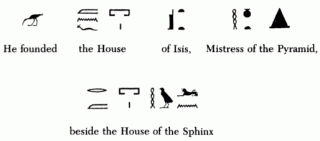
Pharaoh was never a title for the king of Egypt. The well known and respected Egyptologist; Dr. Ashraf Ezzat maintains that in rare instances where the word Pr-aa does appear in a cartouche, such as in the Kalabsha temple, it is a fraud. The Kalabsha temple was renovated by the same Ptolemaic dynasty that employed the Hebrew scribes who perpetrated the Septuagint Bible.[15]
Carved from a single limestone ridge the Sphinx of Giza stares past the Sphinx Temple in front of it and vacantly eastward at the encroaching urban sprawl of Cairo only a few hundred yards away. With the body of a crouching animal and the undersized head of a drag queen the two hundred and forty-one foot long, sixty-three foot wide and a little over sixty-six foot tall Sphinx is the largest monolithic statue in the world.
About a thousand yards south of the second pyramid the Sphinx is enclosed in a depression at a depth almost to its neck. The depression was excavated when immense blocks of limestone were quarried from around its base and used in the construction of the Sphinx Temple directly east of it and the Valley Temple on the south side of the Sphinx Temple.
In academic Egyptology, empirical science goes right out the window in order to make room for scholastic dogma. Caviglia, a sea captain by trade, decided in the second decade of the nineteenth century that because an ancient road on the south side of the sphinx leads to the foot of the second pyramid, the Sphinx and the second pyramid must be a matched pair. Vyse’s criminal antics in Giza a few years later lends all the validity university pedants need to legitimize Herodotus’ entire tale about the construction of the Giza pyramids.
Herodotus, “The Father of Lies,” has been proven correct that Khufu built the Great Pyramid by evidence that no competent and impartial investigator would ever accept. He attributed the second pyramid to Khafre therefore that must also be so, same for Mycerinus building the third pyramid. Herodotus inexplicably never even mentions the sphinx but it only follows suit that Khafre also built it because it is on the same road as his pyramid. Just for good measure Khafre built the sphinx in his own image to guard his pyramid. This is science?
Any attempt to say otherwise, especially by another scholar, will bring the full weight of the academic establishment crashing down upon the theorist like the hammer of Thor. Zecharia Sitchin, acknowledged as one of the twenty foremost experts alive on Sumerian cuneiform, saw himself marginalized into the category of an Erich von Däniken and his scholastic career ruined for daring to write The Stairway to Heaven, the 1980 book that did say otherwise and exposed Vyse as a fraud.
Even Selim Hassan, author of the sixteen volume, Encyclopedia of Ancient Egypt, considered the bible of conventional Egyptology, admits “there is not one single contemporary inscription which connects the Sphinx with Khafre.”[16] The Inventory Stele goes on to tell how Khufu excavated and renovated the sphinx which it simply calls the statue, buried then in sand just like it would be again by the nineteenth century. But these passages have been arbitrarily dismissed by academia as Late Period historical revisionism.
The Dream Stele or Sphinx Stele, usually dated to 1401 Before the Common Era (BCE), purports to tell the story of how Thutmose IV through a dream he had while sleeping under the sphinx usurped his older brother and became king of Egypt by restoring it to its former grandeur.
The Stele is left prominently between the paws of the sphinx, where it was found, for tourists to gawk at. Presumably because it is desirable ‘Late Period historical revisionism’ and is frequently cited by academia as evidence that Khafre built the sphinx.
Henry Salt was a ruthless and prolific collector of Egyptian artifacts which he sold to both the British Museum and the Louvre. He was the British Consul General in Egypt from 1815 till his death in 1827. It was he who had tasked Caviglia with clearing the sand from the sphinx. He was proficient enough in deciphering hieroglyphics as to have earned the praise of Champollion.
It was Salt, a trained and prodigiously talented artist, who copied the original facsimile of the Dream Stele. It was this facsimile which Thomas Young, the British Egyptologist who insisted he was just as responsible for the deciphering of the Rosetta stone as Champollion, would supposedly base his interpretation.
Salts facsimile purportedly reads “… which we bring for him: oxen … and all the young vegetables; and we shall give praise to Wenofer … Khaf … the statue made for Atum-Hor-em-Akhet.” The last line, the thirteenth line, allegedly bears the syllable of Khaf which is no longer found on the Dream Stele itself because according to Wikipedia it flaked off “when the Stele was re-excavated” in 1925. Young had his own copy of Salts facsimile from which he did his translation. Setting the precedent that would precipitate the likes of Vyse Young simply inserted the glyph for Ra to complete Khafra’s name.
Over eighty years later, when Breasted got a hold of Young’s copy, it had the Khaf syllable but no partial cartouche around it. He concluded that “The mention of King Khafre has been understood to indicate that the Sphinx was the work of this king–a conclusion which does not follow; Young has no trace of a cartouche.” When Graham Hancock and Robert Bauval pointed out in their 1996 book, Message of the Sphinx, that an Egyptologist of Breasted’s stature had said this, the very foundations of academia shook.
The British Museum somehow proved to Bauval that they did have a copy of Salts original 1820 facsimile, and it showed a rising sun (Kh) and a slug (f) inside a partial cartouche.[17] That proves exactly nothing except Vyse wasn’t the only one who lacked integrity. Thomas Young was the empire’s most accomplished scientist of his generation. His notable scientific contributions span the gamut from light to solid mechanics, energy, physiology, language, musical harmony and Egyptology. Only a complete idiot would believe he was given a flawed copy to do his historical translation with.
Even if it was not another of the empire’s forgeries just as Maspero said Khafre’s cartouche on line thirteen of the Dream Stele only validated the Inventory Stele “that the Sphinx was already buried in sand by the time of Khafre and his predecessors” and that Khafre had excavated it. Hassan is on record as saying of the “mutilated line” that “it proves nothing.”
Budge felt the Sphinx was “in existence in the days of Khafre, or Khephren, and it is probable that it is a very great deal older than his reign.”[18] Yet the podium of orthodox academia has inexplicably been given to archaeologists of far lesser accomplishments whom continue to dogmatically attribute the Sphinx to Khafre.
In the latter part of the twentieth century, John Anthony West an American author, lecturer and Egyptian antiquities tour guide posed the first serious challenge to academia’s account of the Sphinx’s construction. As if paving the way for Sitchin’s ruthless 1980 scholastic attack on conventional Egyptology, West published Serpent in the Sky in 1979. West’s book pays homage to the revelations of R. A. Schwaller de Lubicz.
Schwaller was born in 1881. He was a French mystic and luminary who, in 1919 along with other theosophists, founded Les Veilleursa, a forerunner of the Sturmabteilung or the SA which provided the muscle for Hitler’s rise to power. Les Veilleursa is alleged by historian Pierre Mariel to have included a young Rudolf Hess in its membership.
By the end of that year, writing under the name of Aor, which means inscrutable light in the Qabalah, Schwaller would be a vital component in the delivery of Les Veilleursa’s manifesto which would lay the groundwork for National Socialism in Germany. In a series of letters, called “Appeals,” published in their journal Veilleur, Aor addresses one “To The Jews” in which he advises them to “go back home.”
As a token of his admiration and gratitude Schwaller was given the title “de Lubicz” in 1919 by the great French writer and exiled Lithuanian prince; Oscar Milosz who studied mysticism at Schwaller’s feet. By the twenties Schwaller was already an accepted master occultist and was guru to many of the elite of Europe.
With his wife Isha he established Station Scientifique Suhalia in Switzerland. The research centre was a study community for influential artists, writers and artisans.
It provided laboratories and an astronomical observatory for the study of physics; chemistry and homeopathic medicine. Theater was studied and there were well equipped shops where craftsmanship was perfected by artisans.
It was during this period that Schwaller is said to have alchemically produced a stained-glass with colors that duplicated the stained glass of Chartres Cathedral, a feat no other chemist had accomplished in the six hundred years of the cathedral’s existence.
In the thirties, Schwaller along with Isha, an academically acknowledged expert in Egyptian hieroglyphics and his step daughter took up residence in a small hotel near the Temple of Luxor. Together they would spend fifteen years intensively studying and surveying the temple.
In 1949 Lubicz would publish his first book on ancient Egypt; Le Temple dans l’Homme or The Temple in Man. He would follow it up with over a half dozen more including his magnum opus Le Temple de l’Homme or The Temple of Man.
Lubicz was an accomplished Alchemist, Qabalist, Mathematician and Philosopher. He was able to follow the evidence in front of him to conclusions that Egyptologists, mired in the intellectual quagmire of the empire’s pseudo-scientific rationalism and convinced of their own evolutionary superiority over all that preceded them, were unable to see or even entertain if they did.
Egyptologists are very good at digging up things and cataloguing them, but because the shoemaker makes such splendid sneakers it does not make him Michael Jordan.
To Lubicz it was apparent that the Temple of Luxor was a flawless expression of the expansion and contraction that is the foundation of esoteric mysticism, all that is, the entire universe contracted into the human body, the macrocosm within the microcosm. In his writings he produced the mathematical correspondences to prove it, and many of France’s leading Egyptologists became converts.
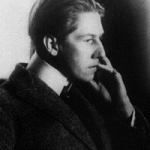
Lubicz maintained that hieroglyphics were not mere expressions of phonetic sounds, but symbols for the building blocks of existence. He writes in Le Temple dans l’Homme that “to conform to the true meaning of the symbol in ancient Egypt, we ought to use the Egyptian term Medu-Neteru, the Greek translation of which, “hieroglyphs,” distorts the Egyptian meaning. Medu-Neteru is the Neters, or the principles conveyed by a sign.”[19]
To the abyssal horror of anglophiles such as “Sir” Petrie, the truth is Medu-Neter is the language of ancient Africa and the great kingdom of Khemet. So old in fact Maspero admonished academia almost a hundred and fifty years ago that nobody really knows what Neter means.[20]
The fabrics from which the tapestries of existence are woven remain fixed. There are templates to which everything that is must conform. Over and over again the human race plays out the same dramas. Some are set in offices and some in the streets, some in battlefields and some on as grandiose a stage as the Trojan War, but the themes always remain vaguely familiar.
C J Jung called them archetypes and defined them as autonomous immutable forms that constitute the collective unconscious of man and are manifested in human behavior, images, art, myths, religions and dreams. Joseph Campbell dedicated his life to studying them. Fredrick Nietzsche called them the eternal recurrence. He saw them clearly and it drove him mad.
To Lubicz, ancient Egyptian civilization and all its edifices are the heirloom of a civilization far superior to twentieth century man. The door was now wide open for Atlantis, but Victorian science was having none of it. Since Lubicz could not be refuted, outside of France he was ignored until he died in 1961. But instead of passing mercifully into obscurity as had been hoped, through the writings of John Anthony West, just like Osiris and the ancient Egyptian kings, Lubicz made a resurrection.
* – “Live the Horus: Mezer (MD[r]), King of Upper and Lower Egypt: Khufu, who is given life. He found the house of Isis, Mistress of the Pyramid, beside the house of the Sphinx of [Harmakhis] on the north-west of the house of Osiris, Lord of Rosta (Rc-sTcw). He built his pyramid beside the temple of this goddess, and he built a pyramid for the king’s daughter Henutsen (Hnwt-sn) beside this temple.”
Related articles: Black Sun Rising – Part 1 Return of the Titans
Black Sun Rising – Part 2 The Footprints of Evil
_____________________________
Citations
[1] Shaheen, Kareem, in Beirut, “Isis Fighters Destroy Ancient Artefacts at Mosul Museum,” The Guardian, Islamic State sec. Web.
[2] “Khufu (2609 BC – 2584 BC),” History. BBC. Web. 2015.
[3] “Herodotus: Giant Gold-mining Ants of India,” Herodotus’ The Histories, 3. 102-5. Web. 2015.
[4] “Herodotus – Biography,” The European Graduate School. Web.
[5] Abovetopsecret. Web.
[6] Sitchin, Zecharia, “Forging the Pharaoh’s Name,” The Stairway To Heaven. 1 Jan. 1980. Web. 2015.
[7] Kollerstrom, Nick, “Against an Egyptian Origin of the Giza Pyramids (cont.),” Part 5. Web.
[8] Sitchin, Zecharia, “Journeys to the Mythical Past,” Pages 26-27. 2007. Web. 2015.
[9] Maspero, Gaston, “Kheops, Khephren, and Mykerinos,” The Dawn of Civilization, Page 363, footnote 4. 1894. Web. 2015.
[10] Sitchin, Zecharia, “Forging the Pharaoh’s Name,” The Stairway To Heaven. 1 Jan. 1980. 2015.
[11] Breasted, J. H., “Inventory Stela,” Fourth Dynasty: Khufu. Ancient Records of Egypt, 1906. 2015.
[12] Silberman, Neil Asher, “Petrie’s Head: Eugenics and Near Eastern Archaeology”, in Alice B. Kehoe and Mary Beth Emmerichs, Assembling the Past (Albuquerque, NM, 1999).
[13] Trigger, Bruce G., “Paradigms in Sudan Archaeology”, International Journal of African Historical Studies, vol. 27, no. 2 (1994).
[14] Breasted, J. H., “Inventory Stela,” Fourth Dynasty: Khufu. Ancient Records of Egypt, 1906. 2015.
[15] Ezzat, Ashraf, “Egypt Knew No Pharaohs nor Israelites,” 2015. Web. 2015.
[16] Hassan, Selim, The Sphinx: Its history in the light of recent excavations (Cairo: Government Press, 1949).
[17] Colavito, Jason, “Who Built the Sphinx?” Lost Civilizations Uncovered. 2001. Web. 2015.
[18] “The Sphinx – Some History,” Spirit & Stone. Global Education Project. Web. 2015.
[19] Schwaller De Lubicz, R. A., “The Temple In Man,” 1949. Web. 2015.
[20] In the Journal de Paris, 15 Mars, 1871; and in the Academy, Aug. 1, No. 29, p. 386, 1871.
Editing: Erica P. Wissinger
_____________________________________

Jack Heart, pen name for George Esposito, is known for his extensive research and writings that provide high-quality information and authentic alternatives to mainstream narratives on a wide variety of subjects. His life experiences make for a highly intriguing perspective.
ATTENTION READERS
We See The World From All Sides and Want YOU To Be Fully InformedIn fact, intentional disinformation is a disgraceful scourge in media today. So to assuage any possible errant incorrect information posted herein, we strongly encourage you to seek corroboration from other non-VT sources before forming an educated opinion.
About VT - Policies & Disclosures - Comment Policy

